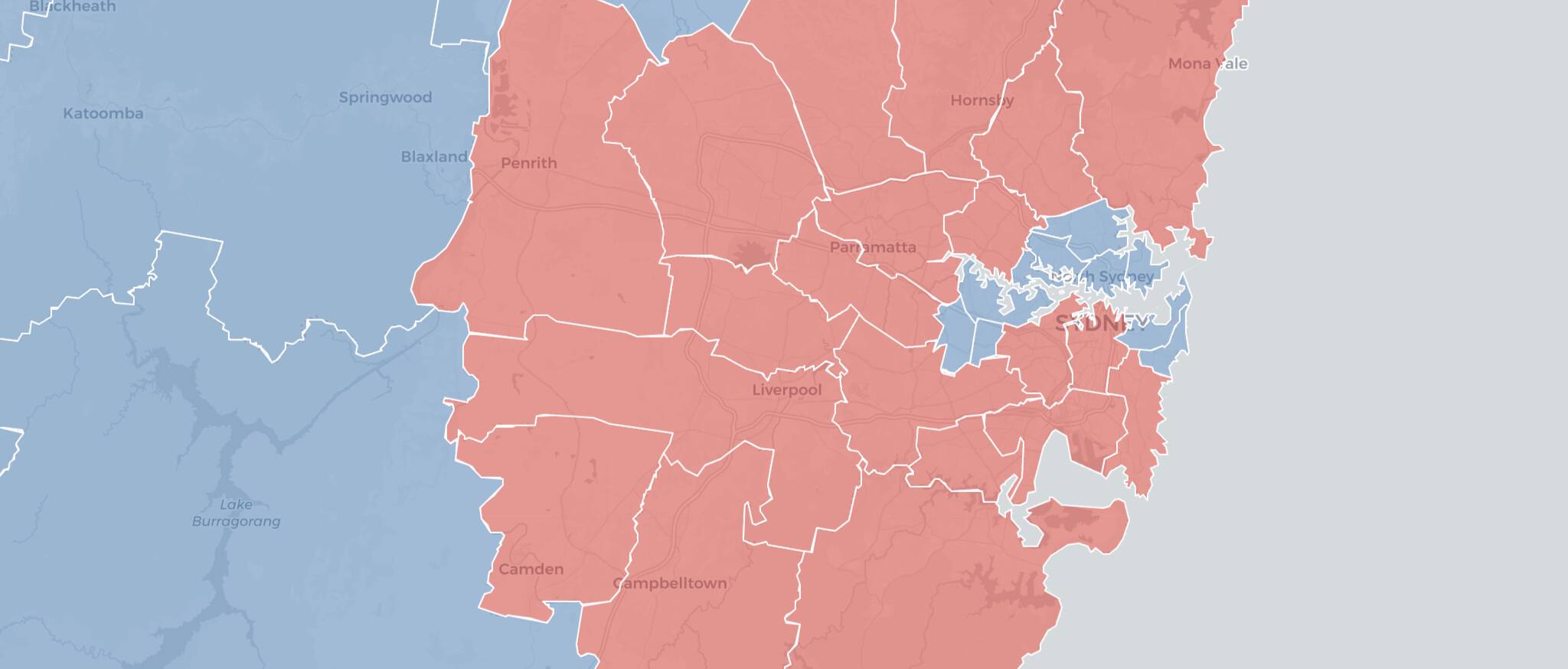Voters in New South Wales go to the polls this September to elect new councillors. The size of these councils vary, with some council areas covering populations in the low thousands, while a number of the largest councils have over 300,000 residents.
I’ve now published my guide to the 27 most populous councils, which you can check out here.
In the past I’ve decided to prioritise a deeper analysis of the largest councils, along with some analysis of the general trends across the state.
In 2021, I prepared guides for the 25 most populous councils, featuring candidate lists, results maps and tables and a history of each council.
This time around I’ve decided to slightly expand my focus by adding in two councils: Tweed and Mid-Coast. Both councils have a population between 95,000 and 100,000.
I’ve partly decided to prioritise the larger councils in part because they are more significant and cover more people (over 67% of the state’s population lives in these 27 councils), but also because they tend to hold elections that involved organised parties, and thus make it possible to analyse voting trends more easily. There is also usually more information on the public record about what happens on the more populous councils.
These 27 councils are mostly urban. 24 of the 27 councils are contained in the area between Newcastle and Wollongong, as well as Shoalhaven, Tweed and Mid-Coast.
This map shows every council in the state, with profiled councils marked in pink. Where a council has been profiled, you can click through to the relevant guide. Or you can use the link above to see the full list.
As is my typical practice, I’ve kept most of the guide for Patreon donors. To access all 27 council guides, you can sign up to support the Tally Room for $5 or more per month.
I decided to unlock two guides for the public to read, two that I find particularly interesting:
The left won control of Parramatta in 2021 when the Liberal Party opted out of contesting the election. The Our Local Community benefited from the Liberal absence to become the largest opposition party. It will be worth seeing if the Liberal Party bounces back and can win back power.
Meanwhile in Tweed, we’ve seen a gradual decline of support for independents, but we’ve also seen the left become stronger over the last two terms. The Liberal Party has squeezed out Nationals-aligned independents, but have consistently lost mayoral elections in this term.
I’m looking forward to analysing these elections more closely as we get closer to September, but for now please check out these guides and join in the comments.




I’m not a great fan of party politics in local government having seen its grooming of people for higher office … even our Premier had a go!
It’s inconceivable that a council with 4 councillors as staffers of state ministers would have any concern about local issues that are not addressed by state officials…
I note that the newly rebadged Libertarian Party is going to try to field candidates in all councils …
With so much being said regarding Kempsey Shire Council, it will be very interesting to see who and how many Candidates put their hand up.
Comments are closed.